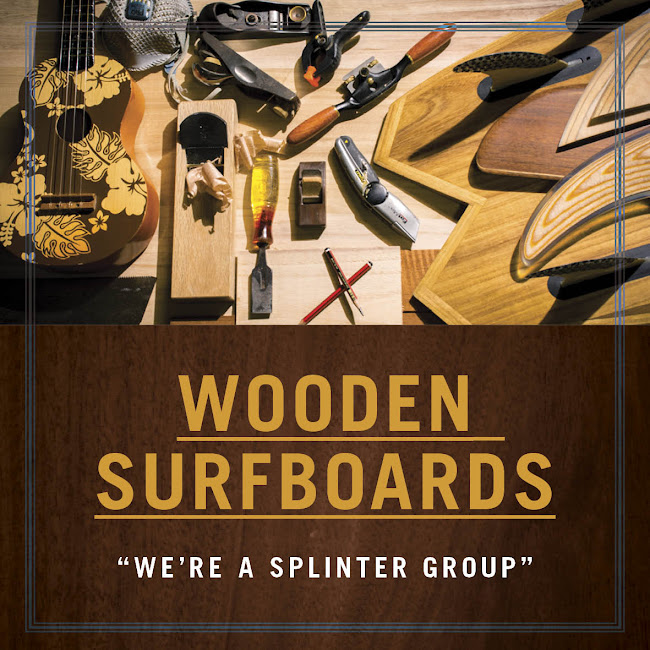"Using boards, clothing, contemporary accounts from newspapers and those
who were there making it happen, as well as some awesome photographs, HOME MADE - Surfing in Tasmania seeks
to understand Tasmania's contribution to surfing culture and also what
makes surfing the islands unique and special. As well as showing off
some beautiful surfboards!"
" Boards on display vary from a nine foot six inch long monster called
'The Gun', used by professional Tasmanian surfer Shaun Wallbank to surf
Tasmania's biggest waves, to Margerie Thompson's board, made in 1925
from an old cedar table by E Harvie Thompson and used for bodyboarding
at Clifton Beach for forty years until the 1960s.
The collection of boards shows the evolution of surfing. Small, home
made boards from the 1920s were taken to beach parties and picnics and
ridden prone, straight to shore. Tasmania's attraction for modern day
surfers from around the world is shown through longboards used to surf
some of the world's biggest waves.
Many early boards were homemade, in backyards or even near the beach
itself, but the exhibition shows how commercial interests were quick to
catch on to Tasmanian's enthusiasm for surfing with timber companies in
Hobart and Launceston producing boards from the 1920s onwards.
Materials, too, have changed. the simple sheets of wood with,
perhaps, a steamed nose and battens for stength of the early belly
boards were replaced in the 1950s by the 'Okinui' style boards of shaped
wood on which the surfer could stand, introducing the shapes and styles
of boards and surfing we recognise today.
In the sixties and seventies the mood was for modern, man-made
materials and the exhibition includes boards made from polystyrene and
fibreglass form Tasmanian firms such as Turn, Tern, Fresh Juice, Milch,
Osprey and Stranger. A return to traditional materials is shown by
examples of hollow-framed timber boards made in the last few years and
including traditional Tasmanian boat building timbers, such has King
Billy pine and Celery Top pine.
As boards and the sstyle of surfing changed, so did the culture
around it. The beach shack culture of picnics and days on the beach for
families and groups of friends of both sexes for the relatively well off
of the 1920s developed after the war with the emergence of the
competitative, disciplined, exclusively male Surf Lifesaving clubs. By
the sixties, surfing was appealing to a younger generation rebelling
against the discipline and conformity of the post war years and these
young surfers sought out new beaches and breaks, often driving for
hours or trekking through the bush for miles in search of breaks that
would be nicknamed - Fluffies, Horries Flobnobs, Rubbish Dump - to
preserve the secrecy of their location."
" The exhibition includes examples of early beachwear; woollen swimsuits,
football shirts and board shorts. Early wetsuits were also exclusively
male, with the girls having to make do with ill-fitting wetsuits
unaccustomed to their shape. We don't have an early wetsuit in the
exhibition. But we'd love one, so if there is an old, mouldy, snagged or
even torn, wetsuit hanging around in the back of your garage or shack,
please do let us know!"
http://www.maritimetas.org/
Subscribe to:
Post Comments (Atom)




























1 comment:
very impressive, very interesting history, cannot imagine surfing with that kind of surfboard, I may sometime go to Tasmanian for surfing. thanks your post
Post a Comment